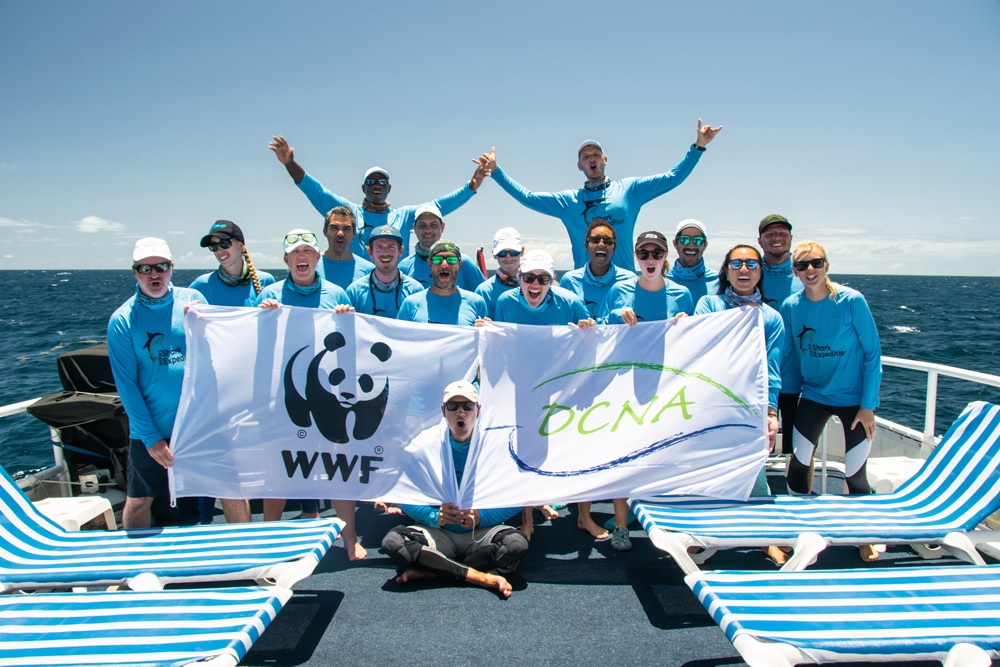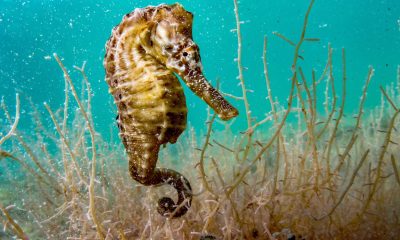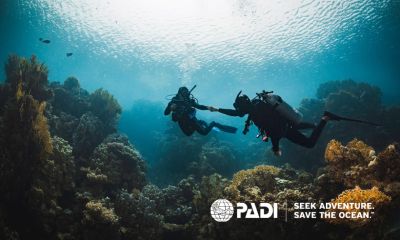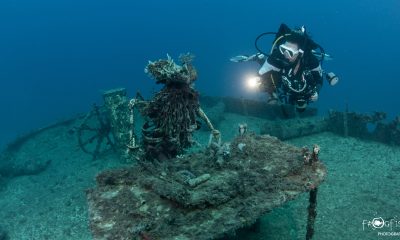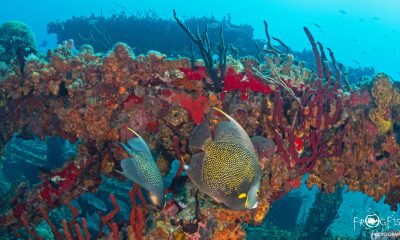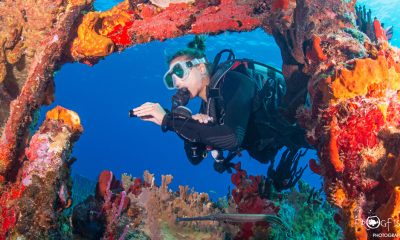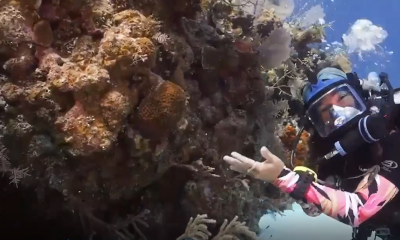News
Unraveling the mysteries of the Saba Bank
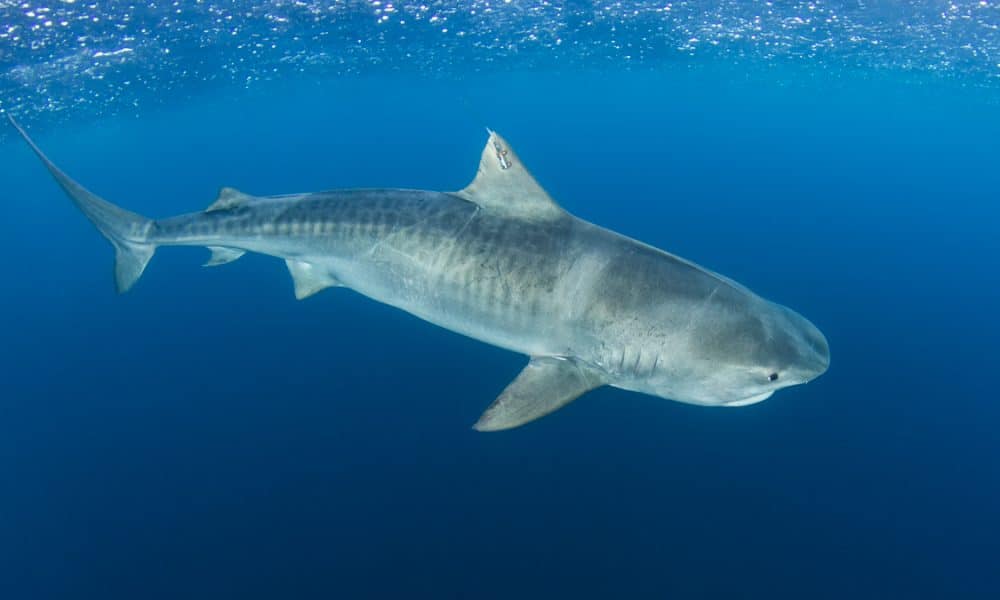
For the first time on the Saba Bank, an expedition team was able to successfully assess the shark diversity by attaching five satellite tags and confirming pregnancy stages by ultrasound of two species of sharks. This research advancement resulted in assessing 56 sharks, including 16 Tiger sharks with one confirmed early-stage pregnancy, and the first tagged male in the region. These details indicate that the Saba Bank’s important role in the shark populations of the North-Eastern and wider Caribbean Region have yet to be unlocked. This information is crucial to better protect sharks within the Dutch Caribbean’s Yarari Marine Mammal and Shark Sanctuary as well as beyond.
Dutch Caribbean Nature Alliance (DCNA) along with the Protected Area Management Organizations of the Dutch Caribbean: Saba Conservation Foundation (SCF), Nature Foundation St. Maarten (NFSXM), St. Eustatius National Parks (STENAPA), STINAPA Bonaire, the Aruba National Parks Foundation (FPNA), the Dutch Caribbean Nature Alliance (DCNA) and World Wildlife Fund for Nature- The Netherlands (WWF-NL) led a team on the Saba Bank in collaboration with Arizona State University, University of Groningen, Beneath the Waves and funded by the Biodiversity Fund of the World Wildlife Fund for Nature- The Netherlands (WWF-NL) .
This week-long ocean research expedition aimed to understand the stages of the reproductive cycle of tiger sharks on the Saba Bank. Tadzio Bervoets, Director of DCNA and expedition leader adds: “It is critical to collect the data necessary to advance the conservation actions for species of sharks in the Caribbean Region and with the data collected over the last week we have been able to get a clear picture of the important role the Saba Bank plays.”
This expedition built upon previous research and expertise from collaborating scientists.
Throughout the week, the team was able to deploy five satellite tags on the dorsal fin of tiger sharks which will allow tracking of the animals over an extended period of time. The ultrasounds which were taken using high technology imagery to determine the maturity and pregnancy stage supported by Brooke Anderson, Ph.D. candidate of Dr. James Sulikowski’s Lab, Arizona State University show that the Saba Bank is a reproductive area for IUCN Near Threatened listed species tiger and the IUCN endangered listed Caribbean Reef Shark. One of the female tiger sharks was confirmed with an early stage pregnancy and boasted a total length of 251cm. This multidisciplinary research approach is necessary for taking the first steps in understanding the reproductive life cycle for the species in the region.
One of the mysteries which resulted was the first tagged male on the Saba Bank sized at 306 cm and later named Maestro Angelo. While it is common to find females, it was surprising to encounter male tiger sharks during the research. Due to the lack of research done previously on these sharks on the Saba Bank, it became evident as to why there is a need to emphasize the importance and need for scientific research into these species.
Expeditions brought forward by the protected area management organizations, such as this one, support the necessary research needed for data-driven management solutions. These results will be used to help steer future research activities, inform local governments on the significant impact these species and their habitats have on ecotourism, and ultimately strengthen conservation policies. Ayumi Kuramae, Saba Bank Management Unit Officer shared the importance of this study:
“Through previous tagging expeditions it was clear that the tiger sharks tagged on the Saba Bank can travel as far south as Grenada, crossing many nations’ borders. This shows the importance of protecting the species not only in our waters, but region wide. Seeing male and female tiger sharks together of different life stages, shows us that protection of these species in our water is vital since we may be protecting the future generation of tiger sharks in the region. A decrease in the number of sharks can affect the overall fish stocks which leads to a disturbed natural balance in the sea. Saba, for example, highly depends on fisheries and dive tourism as part of the local economy which also relies on a healthy fish stocks. Thus, understanding the role of these apex predators is extremely important.”
After gazetting, the Yarari Marine Mammal and Shark Sanctuary will encompass the exclusive economic zone waters of the Saba Bank along with Saba, Bonaire and Statia. This sanctuary has the intention to provide a safe place for these animals, but without supportive data and knowledge, it is difficult to ensure they receive the appropriate protection measures. In order to survive, tiger sharks may use the Saba Bank as a key habitat for different stages of their life cycle but are known to travel to other regions during different life stages, making them a transboundary species. This expedition will help identify where larger, multi-national marine protected areas across the Caribbean should be to protect these species during their whole life cycle.
For more information about the work of the DCNA visit their website by clicking here
Images: Daniel Norwood
News
Seahorse National Park announced on Eleuthera in The Bahamas
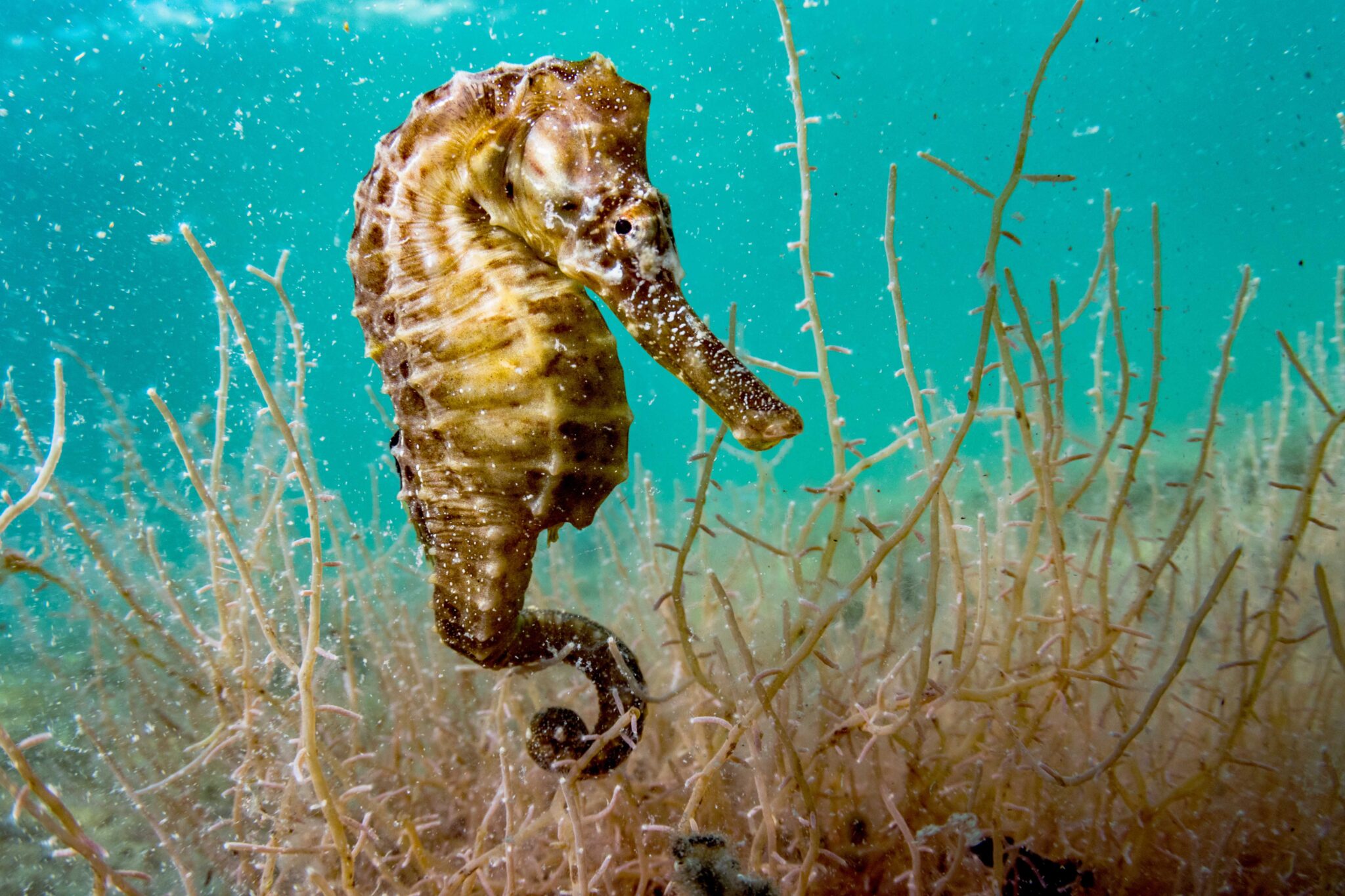
This week has seen the announcement of the designation of Seahorse National Park at Hatchet Bay Cave and Sweetings Pond on Eleuthera. This monumental announcement comes after years of efforts from the BNT and its partners in advocating for the protection of Sweetings Pond and its surrounding areas as an official national park under the BNT’s management.
Sweetings Pond is a large, land-locked saltwater pond in Hatchet Bay, Eleuthera. It has many unique natural features, but the most notable of them all is its incredible seahorse population, which is believed to be the densest population of seahorses in the world. The new 548-acre national park protects the entire one-mile-long pond and the surrounding terrestrial area. The land surrounding Sweetings Pond is a blend of intact coppice, mangroves, and farmlands. In addition, the new national park includes the extensive Hatchet Bay Caves system. This historic cave system is a popular attraction and contains a number of impressive geological features. It is one of the longest dry cave systems in The Bahamas.
Since 2014, the BNT has been leading efforts to have the area declared as a national park. This included years of public outreach and stakeholder consultations in communities across Eleuthera; education presentations in local schools; science and research efforts; and engaging consecutive government administrations. In 2018, the BNT submitted the “20 by 20 Marine Protection Plan” to the government, which included the recommendation to declare Sweetings Pond and other areas in The Bahamas as protected areas.
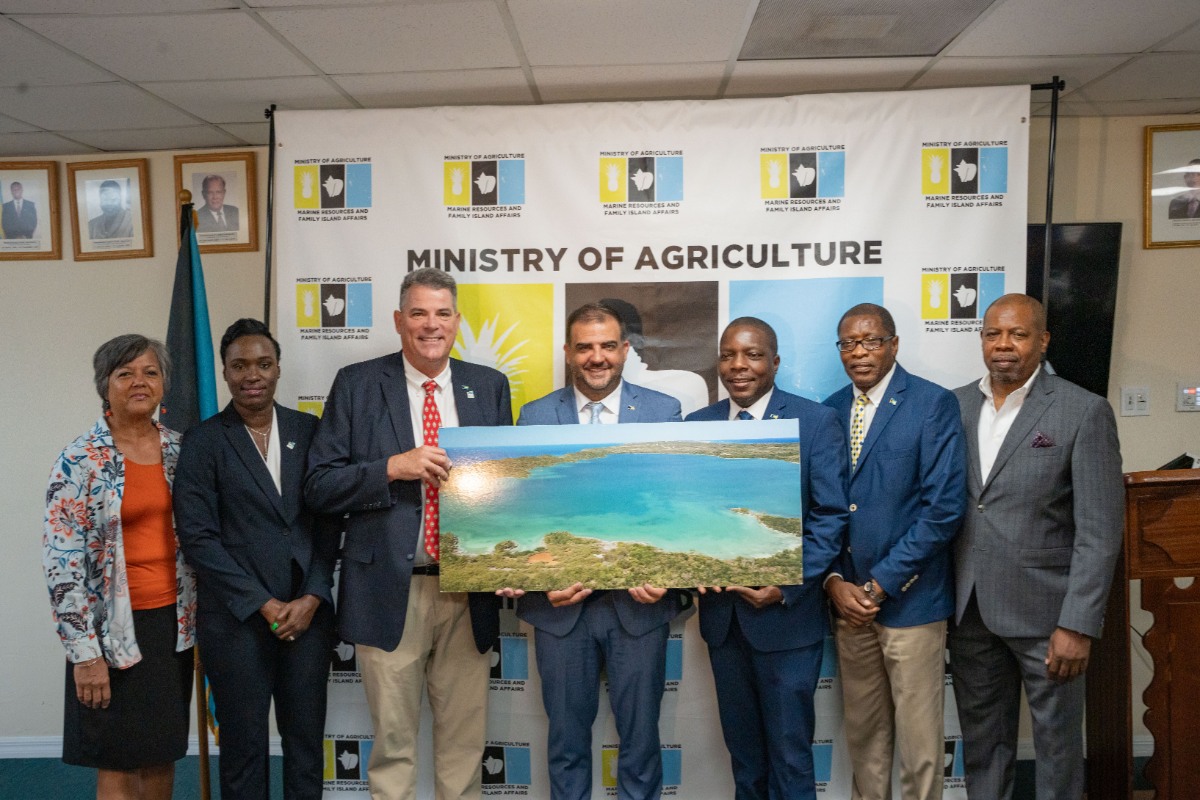
During the lease signing ceremony for Seahorse National Park, Minister Clay Sweeting, said, “This lease agreement for Sweetings Pond has been a long time coming. It represents a milestone in our journey towards sustainable development. It symbolises our collective responsibility to safeguard our natural heritage and create a harmonious relationship between economic progress and environmental preservation.
“I would like to express my gratitude to all stakeholders in this process of drafting and finalising this lease agreement. Their dedication, expertise, and commitment has been crucial in ensuring that this agreement falls in line with our vision of creating a thriving ecosystem while promoting responsible usage. Let us continue to preserve the jewel that is Sweetings Pond for many generations to come.”
The BNT invites the public to stay tuned for more news about its plan for the country’s newest national park: Seahorse National Park at Hatchet Bay Cave and Sweetings Pond!
To learn more about the role the BNT plays in managing terrestrial and marine national parks, conserving wildlife, and informing environmental policy, please visit its website: www.bnt.bs
Follow/subscribe to its various social media channels: Facebook, Instagram, Twitter, and YouTube.
Banner Image: A lined seahorse (Hippocampus erectus), female, clining to algae in an alkaline pond in The Bahamas by Shane Gross
News
PADI Club invites Ocean Lovers on exclusive dive trip to Bonaire this September
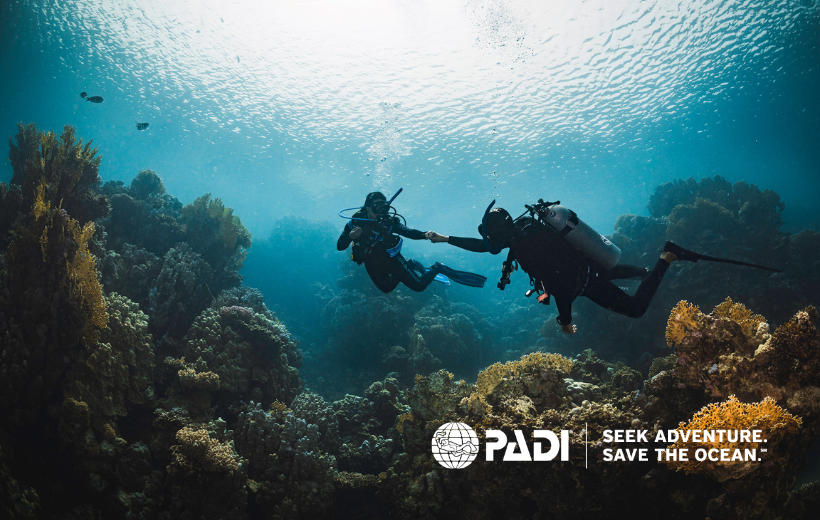
Following the popularity of the PADI Club trip to Belize at the end of July, a second “dive trip of a lifetime” has just been announced by PADI Club to Bonaire this September 23-30, 2023.
Offered exclusively for PADI Club members as part of their yearly benefits, attendees will get to seek adventure while staying at the all-inclusive Buddy Dive Resort, one of PADI’s premier members on the island. Other PADI Members in Bonaire – including Toucan Divers, Divi Flamingo, Wanna Dive, Dive Friends and Scuba Do – will also be hosting various dive experiences throughout the week.
“Bonaire is a unique and beautiful gem in the Dutch Caribbean and we want to show our Club Members this little island looms large as a dive destination,” says Zach Pavkov, PADI Club Operations Manager. “This trip offers participants a chance to not only explore a world-class diving destination but do so through some of the very best PADI Operators.”
PADI Club members will receive a generous discount for this seven-day diving adventure, with packages starting at $1,739 per diver for double occupancy.
Included in the package are:
- social events that include hosted dinners, cocktail parties and live music
- transportation in Buddy Dive Resort’s famous pick-up truck
- daily shore diving and boat diving
- accommodation, with the option to share a room with another solo diver or rent out one, two and three-bedroom apartments to host larger groups of divers
- surface interval activities that include PADI Seminars and island excursions like hiking and bird-watching.
“Because the water surrounding Bonaire has been an established marine park for 44 years, Bonaire is now a top-ranked destination with abundant marine life that includes scorpionfish, flounder and frogfish, moray eels, hawksbill turtles and eagle rays, ” continues Pavkov.
With limited spots available, the list of participants will be decided on a first-come, first-served basis. Those who are not yet PADI Club Members but are interested in joining the trip can sign-up, which will also give them access to:
- 20% of PADI eLearning® programs and PADI Gear™
- a free ReActivate® online refresher
- a free DAN® Prepared Diver course
- a subscription to Scuba Diving® magazine
- access to the PADI Club Celebrity Speaker Series webinars
- brand partner benefits from GoPro, Uber, Salt Life and more
To further support ocean lovers to create positive ocean change, five percent of the PADI Club membership fee will go towards supporting conservation efforts around the globe.
“PADI Club benefits are designed not just to empower divers to explore the ocean, but also enable them to play a pivotal role in saving the ocean too,” says Pavkov. “This year’s additional expedition to Bonaire gives our community the chance to come together and explore our shared blue planet in a truly meaningful and connected way.”
Click here to sign up for PADI Club and reserve your spot here to join the Bonaire dive trip.


